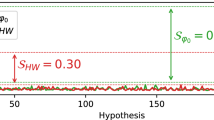Abstract
A large variety of side-channel attacks have been developed to extract secrets from electronic devices through their physical leakages. Whatever the utilized strategy, the amount of information one could gain from a side-channel trace is always bounded by the Mutual Information (MI) between the secret and the trace. This makes it, all punning aside, a key quantity for leakage evaluation. Unfortunately, traces are usually of too high dimension for existing statistical estimators to stay sound when computing the MI over full traces. However, recent works from the machine learning community have shown that it is possible to evaluate the MI in high dimensional space thanks to newest deep learning techniques. This paper explores how this new estimator could impact the side channel domain. It presents an analysis which aim is to derive the best way of using this estimator in practice. Then, it shows how such a tool can be used to assess the leakage of any device.
Access this chapter
Tax calculation will be finalised at checkout
Purchases are for personal use only
Similar content being viewed by others
Notes
- 1.
These sets are actually multisets as they may contains repetitions of a single elements but the Cartesian product can be canonicaly extended to multisets.
References
Belghazi, M.I., et al.: Mine: mutual information neural estimation (2018)
Benadjila, R., Prouff, E., Strullu, R., Cagli, E., Dumas, C.: Study of deep learning techniques for side-channel analysis and introduction to ascad database. ANSSI, France & CEA, LETI, MINATEC Campus, France (2018)
Joye, M., Quisquater, J.-J. (eds.): CHES 2004. LNCS, vol. 3156. Springer, Heidelberg (2004). https://doi.org/10.1007/b99451
Bronchain, O., Hendrickx, J.M., Massart, C., Olshevsky, A., Standaert, F.X.: Leakage certification revisited: Bounding model errors in side-channel security evaluations. Cryptology ePrint Archive, Report 2019/132 (2019)
Bronchain, O., Standaert, F.X.: Side-channel countermeasures’ dissection and the limits of closed source security evaluations. Cryptology ePrint Archive (2019)
Chari, S., Rao, J.R., Rohatgi, P.: Template attacks. In: International Workshop on Cryptographic Hardware and Embedded Systems (2002)
Cristiani, V., Lecomte, M., Hiscock, T.: A bit-level approach to side channel based disassembling. In: Belaïd, S., Güneysu, T. (eds.) CARDIS 2019. LNCS, vol. 11833, pp. 143–158. Springer, Cham (2020). https://doi.org/10.1007/978-3-030-42068-0_9
Eisenbarth, T., Paar, C., Weghenkel, B.: Building a side channel based disassembler. In: Gavrilova, M.L., Tan, C.J.K., Moreno, E.D. (eds.) Transactions on Computational Science X. LNCS, vol. 6340, pp. 78–99. Springer, Heidelberg (2010). https://doi.org/10.1007/978-3-642-17499-5_4
Goldack, M., Paar, I.C.: Side-channel based reverse engineering for microcontrollers. Master’s thesis, Ruhr-Universität Bochum, Germany (2008)
Kingma, D.P., Ba, J.: Adam: a method for stochastic optimization (2014)
Kocher, P., Jaffe, J., Jun, B.: Differential power analysis. In: Annual International Cryptology Conference (1999)
Kraskov, A., Stögbauer, H., Grassberger, P.: Estimating mutual information. Phys. Rev. 69, 066138 (2004)
Macé, F., Standaert, F.X., Quisquater, J.J.: Information theoretic evaluation of side-channel resistant logic styles, vol. 2008, p. 5, January 2008
Masure, L., Dumas, C., Prouff, E.: A comprehensive study of deep learning for side-channel analysis. IACR Trans. Cryptographic Hardware Embed. Syst. 2020, 348–375 (2019)
Prouff, E., Rivain, M.: Theoretical and practical aspects of mutual information based side channel analysis, pp. 499–518, January 2009
Quisquater, J.J., Samyde, D.: Electromagnetic analysis: measures and counter-measures for smart cards (2001)
Santurkar, S., Tsipras, D., Ilyas, A., Madry, A.: How does batch normalization help optimization? (2018)
Schneider, T., Moradi, A.: Leakage assessment methodology. In: International Workshop on Cryptographic Hardware and Embedded Systems (2015)
Shannon, C.E.: A mathematical theory of communication. Bell Syst. Tech. J. 27(3), 379–423 (1948)
Srivastava, N., Hinton, G., Krizhevsky, A., Sutskever, I., Salakhutdinov, R.: Dropout: a simple way to prevent neural networks from overfitting. J. Mach. Learn. Res. 15(56), 1929–1958 (2014)
Steeg, G.V.: Non-parametric entropy estimation toolbox (2014). https://github.com/gregversteeg/NPEET
Strobel, D., Bache, F., Oswald, D., Schellenberg, F., Paar, C.: Scandalee: a side-channel-based disassembler using local electromagnetic emanations. In: Proceedings of the Design, Automation & Test in Europe Conference & Exhibition (2015)
Vinh, N.X., Epps, J., Bailey, J.: Information theoretic measures for clusterings comparison: variants, properties, normalization and correction for chance. J. Mach. Learn. Res. 11(95), 2837–2854 (2010)
Author information
Authors and Affiliations
Corresponding author
Editor information
Editors and Affiliations
Rights and permissions
Copyright information
© 2020 Springer Nature Switzerland AG
About this paper
Cite this paper
Cristiani, V., Lecomte, M., Maurine, P. (2020). Leakage Assessment Through Neural Estimation of the Mutual Information. In: Zhou, J., et al. Applied Cryptography and Network Security Workshops. ACNS 2020. Lecture Notes in Computer Science(), vol 12418. Springer, Cham. https://doi.org/10.1007/978-3-030-61638-0_9
Download citation
DOI: https://doi.org/10.1007/978-3-030-61638-0_9
Published:
Publisher Name: Springer, Cham
Print ISBN: 978-3-030-61637-3
Online ISBN: 978-3-030-61638-0
eBook Packages: Computer ScienceComputer Science (R0)




